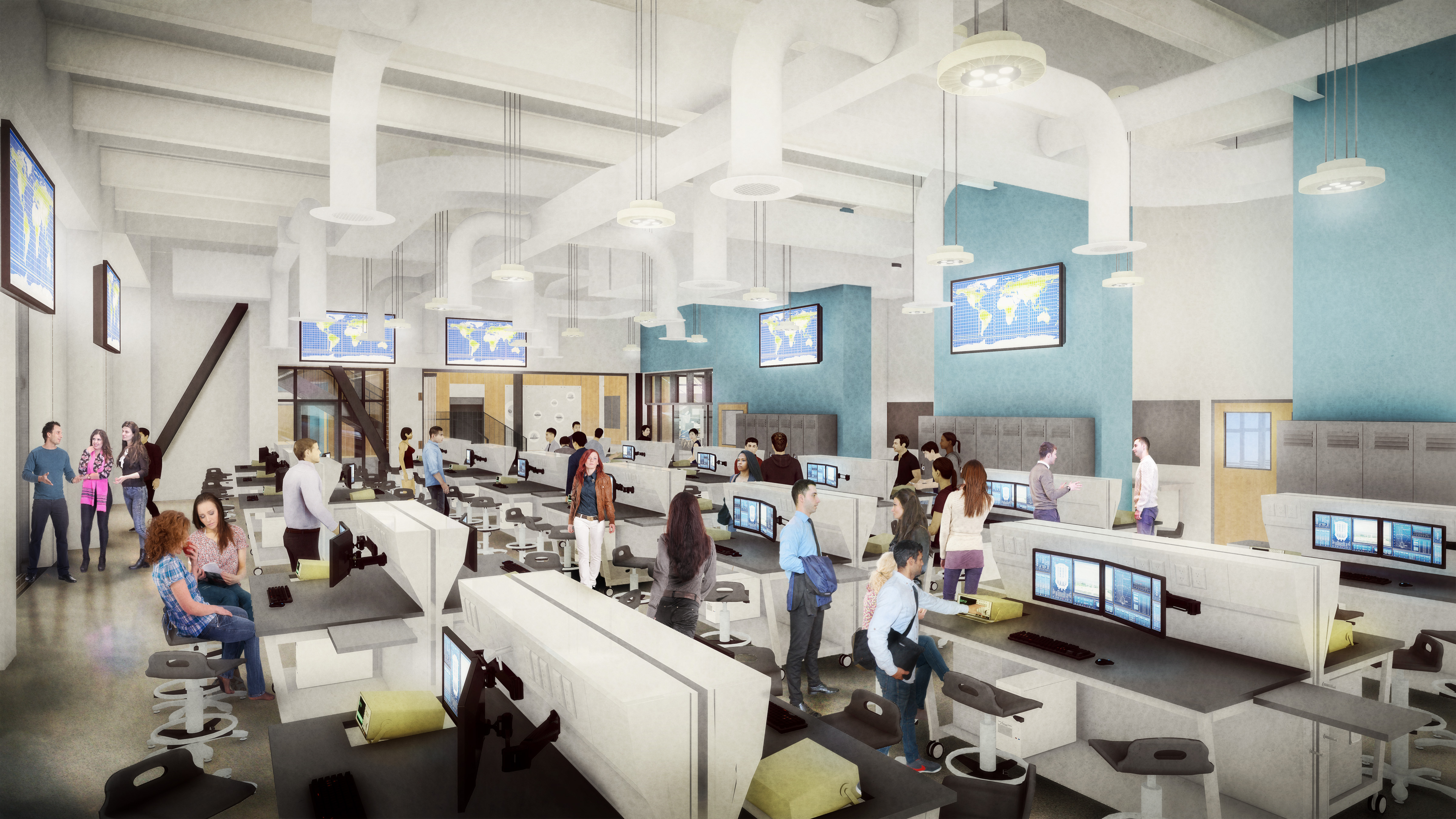Project Profile: Aerospace Engineering Sciences Building
A look at the new Aerospace Engineering Sciences Building at the University of Colorado Boulder
Project name: Aerospace Engineering Sciences Building, University of Colorado Boulder
Location: Boulder, Colorado
Size: 178,294 sf
Cost: $101 million
Project team: Hord Coplan Macht (HCM2) (architect), RATIO Architects (architect), Whiting-Turner Construction (contractor)
Completion date: August 2019
 A mural by Colorado-based artist Trine Bumiller greets visitors to the new Aerospace Engineering Sciences building at CU Boulder.CREDIT: CASEY A. CASS/CU BOULDER
A mural by Colorado-based artist Trine Bumiller greets visitors to the new Aerospace Engineering Sciences building at CU Boulder.CREDIT: CASEY A. CASS/CU BOULDER
This four-story new landmark facility for Colorado’s aerospace industry will bring together several research clusters into one combined facility. The new building will enable the University of Colorado Boulder’s Ann & H.J. Smead Department of Aerospace Engineering Sciences to advance world-class research and innovative academic programs devoted to preparing students to enter the aerospace workforce or pursue a career in research.
CU Boulder’s students, faculty, and alumni conduct groundbreaking research from under the surface of the ocean all the way into deep space and address compelling global challenges and societal needs.
 Hundreds of students, faculty, Colorado business leaders, and community members attend a grand opening ceremony for the new Aerospace Engineering Sciences building at CU Boulder. CREDIT: CASEY A. CASS/CU BOULDER
Hundreds of students, faculty, Colorado business leaders, and community members attend a grand opening ceremony for the new Aerospace Engineering Sciences building at CU Boulder. CREDIT: CASEY A. CASS/CU BOULDER
A beacon to the aerospace community
The Aerospace Engineering Sciences building design provides open and flexible research spaces that are reconfigurable and maximize access to natural light, as well as inspiring views of the Front Range and signature iconic Boulder Flatirons.
The building also meets the university’s environmentally conscious design and construction standards, built to achieve Leadership in Energy and Environmental Design (LEED) Gold certification.
The new building’s Practical Innovation through Learning, Observation and Teaching (PILOT) Lab on its ground floor is the foundational lab practicum environment for the aerospace engineering undergraduate curriculum. The lab enables the department’s signature hands-on experiential learning environment by reinforcing classroom lectures with real-world engineering work starting freshman year. It can accommodate up to 110 students per class module who will learn the fundamentals of working in an aerospace engineering laboratory environment.
 During a recent visit to CU Boulder, NASA Administrator Jim Bridenstine addressed students in a 200-seat auditorium in the new Aerospace Engineering Sciences building.CREDIT: CASEY A. CASS/CU BOULDER
During a recent visit to CU Boulder, NASA Administrator Jim Bridenstine addressed students in a 200-seat auditorium in the new Aerospace Engineering Sciences building.CREDIT: CASEY A. CASS/CU BOULDER
 PILOT Lab at the Aerospace Engineering Sciences building at CU Boulder.CREDIT: HORD COPLAN MACHT (HCM2)
PILOT Lab at the Aerospace Engineering Sciences building at CU Boulder.CREDIT: HORD COPLAN MACHT (HCM2)
Real-world testing for outer space research
The new building also hosts a range of other cutting-edge facilities. A mix of wet and dry labs enables research into fluids, structures, and materials for advanced aerospace vehicle design; human subjects research for human spaceflight operations; and the design of life and physical science experiments to take place on the International Space Station. These labs include a model Dream Chaser spacecraft cockpit for human factors research, provided to CU Boulder by Sierra Nevada Corp.; an indoor facility for testing aerial and ground-based drones using motion-capture technology; and a Payload Operations Center for communicating by video with astronauts aboard the ISS in real-time as they work on experiments designed by researchers in the department.
 Indoor test facility at the Aerospace Engineering Sciences building at CU Boulder.CREDIT: HORD COPLAN MACHT (HCM2)
Indoor test facility at the Aerospace Engineering Sciences building at CU Boulder.CREDIT: HORD COPLAN MACHT (HCM2)
Daniel Strain is a Science Writer at the University of Colorado Boulder.

